#joseph beaume
Text
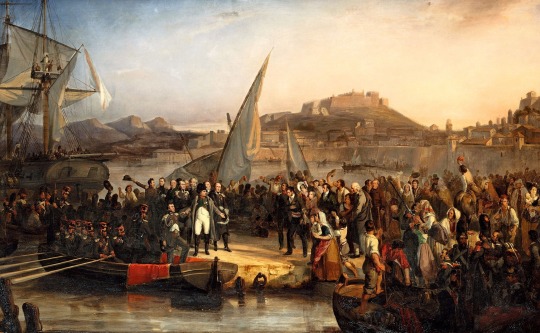

Napoleon's departure from Elba on 26 February, 1815.
by Joseph Beaume
#napoléon#napoleon#bonaparte#art#joseph beaume#elba#napoleon bonaparte#napoléon bonaparte#history#france#french#napoleonic#napoleonic wars#europe#european#mediterranean#boats#boat#ship#ships#port#harbour#island#isle
129 notes
·
View notes
Text
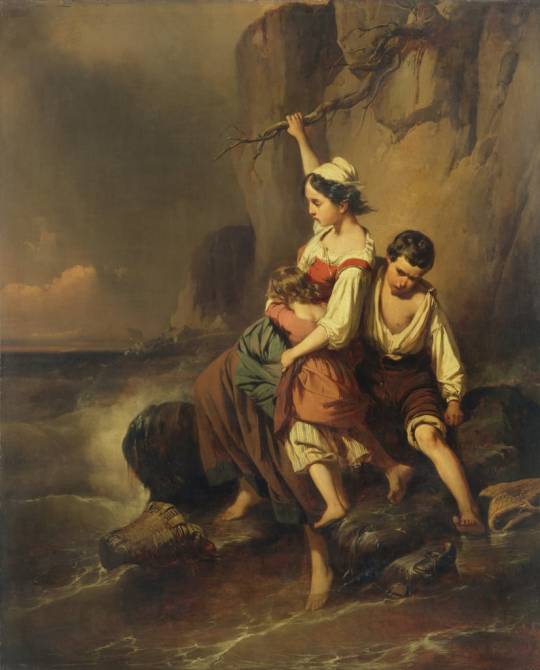
Joseph Beaume - High Water.
10 notes
·
View notes
Photo
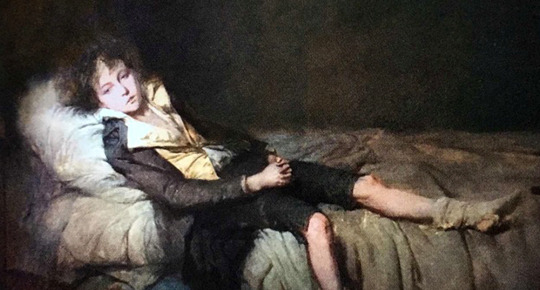
… [his] look had especially so strong a feature of resignation and indifference, that it seemed to say, what does it matter to me? Dispatch your victim.
—an excerpt from the report of Jean-Baptiste Harmand, a commissioner of the Convention, who was appointed the duty of visiting Louis-Charles in the Temple to examine his condition. [image: Detail from Louis XVII au Temple by Joseph Beaume, 1868]
#louis charles#french history#18th century#history#quotes#was finally able to find the identity of this painting that was on an old postcard print
48 notes
·
View notes
Photo
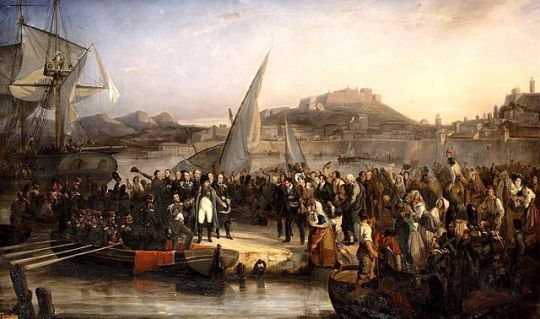
Napoleon leaving Elba by Joseph Beaume, 1836
In April 1814, with a European coalition occupying Paris, Napoleon Bonaparte was forced to abdicate the French throne. He was sent into exile on Elba, a small Mediterranean island located 260 km (160 miles) south of France and 10 km (6 miles) west of the Italian coastline. Ten months later, in one of those life-is-stranger-than-fiction episodes, Napoleon managed to spirit himself off the island and regain the French crown. To find out how and why Napoleon escaped from Elba, see: https://shannonselin.com/2016/02/how-did-napoleon-escape-from-elba/.
9 notes
·
View notes
Photo

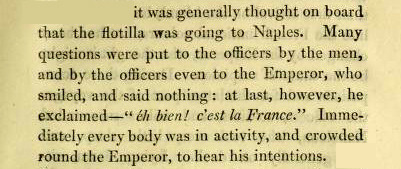
They didn’t know where they were going
Painting: Napoléon Ier quittant l'île d'Elbe, 26 février 1815, by Joseph Beaume (1835)
Text: The Substance of Some Letters by Baron Broughton.
https://archive.org/details/substanceofsomel01brou/page/112/mode/2up
10 notes
·
View notes
Text
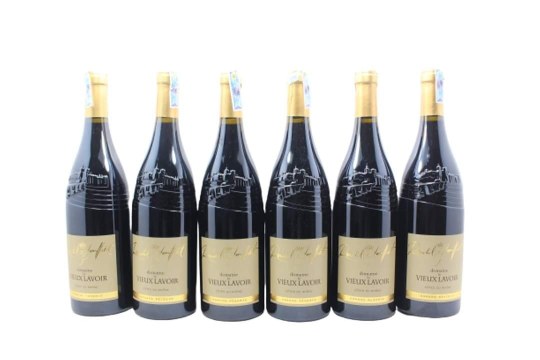
GIỚI THIỆU VANG VÙNG COTE DU RHONE (PHÁP)
Trải dài ở miền miền Tây Nam nước Pháp, Cote du Rhone được mệnh danh là cái nôi của nho Syrah. Dòng nho sẫm màu phổ biến trên toàn thế giới bởi hương vị đặc biệt tại mỗi vùng thổ nhưỡng khác nhau.
Theo thống kê, tổng sản lượng rượu vang tại vùng Rhone đạt khoảng 4 triệu hl rượu vang mỗi năm. Trong số đó có hơn một nửa được xếp hạng Cote du Rhone và Cote du Rhone-Village (phân loại theo làng). Những AOC nổi tiếng đạt phân hạng cao nhất chỉ đóng góp khoảng 5% tổng sản lượng rượu vang vùng Rhone (theo Wikipedia)
Bởi điều kiện khí hậu và địa hình, vùng Rhone Valley được chia thành hai tiểu vùng có truyền thống và phong cách rượu vang riêng biệt là Bắc Rhone và Nam Rhone.
Trong khi vùng phía Bắc thường sản xuất rượu vang đỏ từ nho Syrah và một số dòng rượu vang có sự phối trộn chung cùng giống nho trắng như Viognier, Marsanne, Roussanne…thể hiện hương vị, phong cách rượu vang đặc trưng của nho Syrah với sự thanh thoát.
Còn tại vùng phía Nam, rượu vang thường được làm chủ yếu từ giống nho Grenache kết hợp cùng các loại nho đỏ khác như Syrah, Mourvèdre, Cinsault…thể hiện nét nổi bật về dòng rượu vang có nồng độ cồn cao (từ nho Grenache)
Những chai rượu vang vùng Rhone nổi tiếng nhất được nằm trong 17 AOC được chỉ định tại cả 2 vùng Bắc Rhone và Nam Rhone. Cụ thể:
✅Bắc Rhone
🍷Côte-Rôtie
🍷Condrieu
🍷Chateau-Grillet
🍷Saint-Joseph
🍷Crozes-Hermitage
🍷Hermitage
🍷Cornas
🍷Saint-Péray
✅Nam Rhone
🍷Rasteau
🍷Vinsobres
🍷Cairanne
🍷Gigondas
🍷Vacqueyras
🍷Beaumes de Venise
🍷Châteauneuf-du-Pape
🍷Lirac
🍷Tavel
✅Thực phẩm Cá Vàng | Nâng tầm cuộc sống
✅Hotline: 082 828 5868
————————————
🍷BỘ SƯU TẬP VANG ĐỎ PHÁP HẢO HẠNG VÙNG CÔTES DU RHÔNE 2018:
✅Domaine le Vieux Lavoir,750ml, 15 độ
✅Reserve De La Ronciere, 750ml, 15 độ
✅Guarrigues De Noguere, 750ml, 15 độ
✅Domaine le Vieux Moulin, 750ml, 15 độ
✅Reserve Del Puech, 750ml, 15 độ
✅Canto & Fils, 750ml, 15 độ
✅THÔNG TIN BÁN HÀNG:
Dung tích 750ml, 15 độ, 6 chai/1 thùng
Giá bán lẻ 750K/chai
Mua ngay http://bit.ly/36zEKrJ
Hotline: 08 2828 5868
0 notes
Text

GIỚI THIỆU VANG VÙNG COTE DU RHONE (PHÁP)
Trải dài ở miền miền Tây Nam nước Pháp, Cote du Rhone được mệnh danh là cái nôi của nho Syrah. Dòng nho sẫm màu phổ biến trên toàn thế giới bởi hương vị đặc biệt tại mỗi vùng thổ nhưỡng khác nhau.
Theo thống kê, tổng sản lượng rượu vang tại vùng Rhone đạt khoảng 4 triệu hl rượu vang mỗi năm. Trong số đó có hơn một nửa được xếp hạng Cote du Rhone và Cote du Rhone-Village (phân loại theo làng). Những AOC nổi tiếng đạt phân hạng cao nhất chỉ đóng góp khoảng 5% tổng sản lượng rượu vang vùng Rhone (theo Wikipedia)
Bởi điều kiện khí hậu và địa hình, vùng Rhone Valley được chia thành hai tiểu vùng có truyền thống và phong cách rượu vang riêng biệt là Bắc Rhone và Nam Rhone.
Trong khi vùng phía Bắc thường sản xuất rượu vang đỏ từ nho Syrah và một số dòng rượu vang có sự phối trộn chung cùng giống nho trắng như Viognier, Marsanne, Roussanne…thể hiện hương vị, phong cách rượu vang đặc trưng của nho Syrah với sự thanh thoát.
Còn tại vùng phía Nam, rượu vang thường được làm chủ yếu từ giống nho Grenache kết hợp cùng các loại nho đỏ khác như Syrah, Mourvèdre, Cinsault…thể hiện nét nổi bật về dòng rượu vang có nồng độ cồn cao (từ nho Grenache)
Những chai rượu vang vùng Rhone nổi tiếng nhất được nằm trong 17 AOC được chỉ định tại cả 2 vùng Bắc Rhone và Nam Rhone. Cụ thể:
✅Bắc Rhone
🍷Côte-Rôtie
🍷Condrieu
🍷Chateau-Grillet
🍷Saint-Joseph
🍷Crozes-Hermitage
🍷Hermitage
🍷Cornas
🍷Saint-Péray
✅Nam Rhone
🍷Rasteau
🍷Vinsobres
🍷Cairanne
🍷Gigondas
🍷Vacqueyras
🍷Beaumes de Venise
🍷Châteauneuf-du-Pape
🍷Lirac
🍷Tavel
✅Thực phẩm Cá Vàng | Nâng tầm cuộc sống
✅Hotline: 082 828 5868
————————————
🍷BỘ SƯU TẬP VANG ĐỎ PHÁP HẢO HẠNG VÙNG CÔTES DU RHÔNE 2018:
✅Domaine le Vieux Lavoir,750ml, 15 độ
✅Reserve De La Ronciere, 750ml, 15 độ
✅Guarrigues De Noguere, 750ml, 15 độ
✅Domaine le Vieux Moulin, 750ml, 15 độ
✅Reserve Del Puech, 750ml, 15 độ
✅Canto & Fils, 750ml, 15 độ
✅THÔNG TIN BÁN HÀNG:
Dung tích 750ml, 15 độ, 6 chai/1 thùng
Giá bán lẻ 750K/chai
Mua ngay http://bit.ly/36zEKrJ
Hotline: 08 2828 5868
0 notes
Text
De eeuwige terugkeer van Napoleon
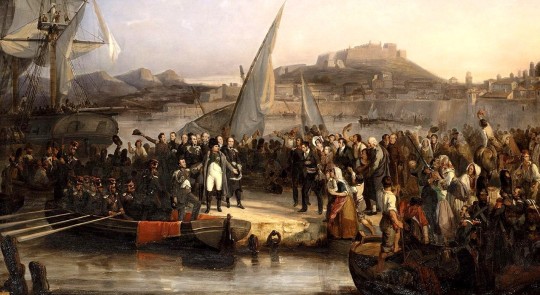
Dat zij Napoleon waren - dat schijnt de hele XIXde eeuw door een bekend syndroom te zijn geweest onder geesteszieken in heel Europa. Maar valse Napoleons zijn er ook op andere manieren geweest: de Franse historica Nathalie Pigault heeft een viertal gevallen in de eerste decennia na 1815 gedocumenteerd, waarbij iemand zich - langere tijd of incidenteel - uitgaf voor de inmiddels naar Sint-Helena verbannen voormalige Franse keizer. Het merkwaardige daarbij is dat de vier mannen die dat deden, onderweg in veel gevallen grif geloofd werden.
In drie gevallen gaat het om rondtrekkende eenlingen, die na 1815 van de goedgelovigheid gebruik maakten om voor nop ergens te logeren, of te eten. Twee van hen zijn door de autoriteiten van de Franse Restauratie opgespoord en tot gevangenisstraf veroordeeld, de derde - afkomstig uit de tot 1860 tot het Koninkrijk Sardinië behorende Savoie - verdwijnt na een tijdje uit de annalen.
Het meest curieus is de vierde, een zekere Hilarion, die in de Lozère tussen 1821 en 1823 een asiel voor geesteszieken bedrijft - je verzint het niet. Hij is, of geeft zich uit voor, een Capucijner monnik, en hij heeft kennelijk geld genoeg om een kasteel te kopen voor de huisvesting van zijn charitatieve instelling. Voordat hij, kennelijk uit geldgebrek, weer uit beeld verdwijnt, wordt hij zelfs - om wat onduidelijke redenen - door wat plaatselijke autoriteiten voor de afgezette keizer gehouden.
Dat Napoleon Bonaparte, die in 1821 in zijn verre ballingsoord Sint-Helena overleed, onverhoeds zou kunnen terugkeren was misschien iets minder gek dan je zou denken. In 1815 was hij immers al eens teruggekeerd uit zijn ballingsoord Elba, om er in honderd dagen in te slagen grote delen van het Franse leger weer achter zich te krijgen, en de inmiddels op de troon gehesen Lodewijk XVIII te verjagen, totdat de nederlaag bij Waterloo aan deze revival van zijn keizerrijk een einde maakte.
Wat zowel de zegetocht van 1815 als het optreden van ‘valse Napoleons’ vermoedelijk zeer bevorderd heeft, was dat de Restauratie onder de door de Franse revolutie aanvankelijk van de troon verdreven Bourbons in brede kring buitengewoon impopulair was. Vooral in de provincie vreesde men het restauratieve bewind, omdat het aanstalten leek te maken de na de Revolutie van 1789 afgeschafte adelijke privileges te herstellen. Ook heerste grote onzekerheid onder degenen die in de revolutiejaren in het bezit waren geraakt van adelijke en kerkelijke goederen en gronden.
De rancuneuze, reactionaire toon die onder het bewind van Lodewijk XVIII door het bestuur werd aangeslagen, deed menigeen het ergste vrezen. Her en der werd door de autoriteiten met huiszoekingen ook jacht gemaakt op de portretten of beeldjes of andere memorabilia van het Keizerrijk die burgers nog in huis konden hebben - ook geen populaire tactiek van de nieuwe overheid. Het Keizerrijk leek zo opeens een goede tijd geweest, en de onaangename aspecten ervan - met name de dienstplicht - werden vlug vergeten.
Velen wilden dus vermoedelijk geloven, dat de Keizer zou kunnen terugkeren. Er deden ook verhalen de ronde dat Napoleon niet écht naar Sint-Helena was overgebracht, dat de balling op het verre eiland een dubbelganger was etc. - fake news dus als het ware. Meer dan een rationele verwachting, lijkt dit alles dus een aanwijzing voor de fundamentele impopulariteit van Lodewijk XVIII en zijn opvolger Karel X. De jaren van de Franse Revolutie en de talrijke regimes die er op waren gevolgd hadden van Frankrijk een land gemaakt, dat zich niet meer liet voegen naar reactionaire plannen voor een terugkeer naar de toestand van voor 1789, zoals ook bleek bij de kortstondige revolutie van 1830.
Aan de nostalgie naar Napoleon is een eind gemaakt onder koning Louis-Philippe, die na 1830 aan de macht kwam en geen Bourbon was. Het lijkt een duidelijk geval van if you can’t beat them, join them. Louis-Philippe zag - vooral op instigatie van zijn premier, Adolphe Thiers - dat het beter was Napoleon te eren als een grote zoon van Frankrijk - hij was inmiddels immers al jaren veilig dood en bovendien waren er ook grote delen van de elite die de Keizer actief hadden gesteund en verongelijkt waren over de kleinzielige discriminatie die ze onder de koningen van de Restauratie hadden ondervonden.
Er kwam dus een officiële Napoleon-verering op gang, zoals bijvoorbeeld blijkt uit bovenstaand schilderij van Joseph Beaume uit 1836, dat door de koning zelf besteld is. Het laat zien hoe Napoleon, onder groot enthousiasme, zich in 1815 op Elba inscheept om in Frankrijk zijn plaats te hernemen. In 1840 werd het lijk van de Keizer plechtig overgebracht uit Sint-Helena naar Frankrijk - iets waartoe overigens al in 1821 een officieel verzoek bij Engeland was ingediend. In een door grote menigten omstuwde zegetocht werd het overgracht naar de Invaliden in Parijs, waar je Napoleons praalgraf vandaag de dag nog kunt gaan bekijken. Het is, goed beschouwd, een merkwaardig monument. Zeker, het dient de verheerlijking van een van Frankrijks grote zonen. Maar het is tegelijkertijd toch ook een monument dat duidelijk moet maken dat de held ervan dood is - morsdood.
Nathalie Pigault: Les faux Napoléon. CNRS Éditions, 2018.
Afbeelding boven: Joseph Beaume (1796-1885), Napoléon I quittant l’Île d’Elbe, 26 février 1815. Afbeeldingen onder: de stoffelijke resten van Napoleon worden, in een soort Griekse tempel die door paarden wordt voorgetrokken, overgebracht naar de Invaliden; contemporaine ets naar een schilderij van Adolphe Jean-Baptiste Bayot et Eugène Charles François Guérard (Musée de l’armée). En: Le char funèbre de Napoléon traverse la place de la Concorde, schilderij van Jacques Guiaud (Château de Versailles).

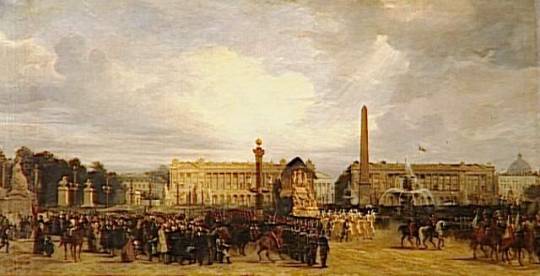
0 notes
Photo

26 February 1815: Napoleon escaped from exile on Elba and headed back to France. The embarkation began at 5 pm. At 7 pm, Napoleon embraced his mother and his sister Pauline at the Mulini Palace. He drove to the quay in Pauline’s small carriage (his was on the ship), with his generals and household following on foot. The crowd gave some faint-hearted cheers as he boarded the felucca Caroline and was taken to the brig Inconstant. At 8 pm, the firing of a cannon signalled departure.
Napoleon’s flotilla consisted of the Inconstant, which normally carried 18 guns and now had 26; the French merchant brig Saint Esprit, hired for the occasion; the bombard Étoile, with 6 guns; the Caroline, and three smaller vessels. On these boats were some 1,150 people: 600 Old Guard (grenadiers, chasseurs, sailors, gunners); 100 Polish Lancers (with their saddles but not their horses); 300 members of the Corsican Battalion; 50 gendarmes (mostly Italians and Corsicans); and 100 civilians, including servants. (18) Each ship carried Napoleon’s Elban flag.
Barely out of Portoferraio, the flotilla was becalmed. By dawn it had travelled only 10 km (6 miles). Light winds continued to be a problem. Passing north of the island of Capraia on February 27, the Inconstant spotted the Melpomène, one of two French frigates whose job was to patrol the waters between Corsica and Elba. The Melpomène did not approach the flotilla, however, and the French frigate Fleur-de-Lys, cruising northwest of Capraia, did not even see Napoleon’s little navy.
That afternoon, the French brig Zéphir spotted the flotilla and came close enough for its Captain Andrieux to have a brief conversation with Captain Taillade of the Inconstant.
“[Andrieux] hailed and Taillade, according to Napoleon’s instructions, gave the name of the ship. ‘Where are you going?’ ‘To Leghorn [Livorno],’ came the answer; ‘and you?’ Still prompted by Napoleon, Taillade replied: ‘To Genoa. Have you any commissions for me there?’ ‘No thank you. And how is the great man?’ Napoleon told him to shout back: ‘He is wonderfully well.’ So they separated.”
At dawn on March 1, 1815, the flotilla was off the cape of Antibes. The French tricolour was hoisted. At 1 pm the vessels were at anchor at Golfe-Juan, between Cannes and Antibes. The disembarkation commenced.
Napoleon made it all the way to Paris without a shot being fired against him. On March 20, he entered the capital and began his second term on the French throne. In June 1815, he lost the Battle of Waterloo and had to abdicate again. He was sent into exile on the remote South Atlantic island of St. Helena, from which there was no escape, except in Napoleon in America.
Image: Napoleon leaving Elba by Joseph Beaume, 1836
47 notes
·
View notes
Text
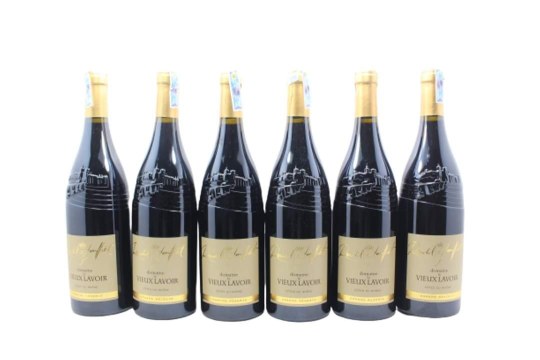
TỔNG QUAN VỀ RƯỢU VANG COTES DU RHÔNE (PHÁP)
✅Toàn bộ vùng Cotes du Rhone có 71.000 ha ruộng nho, sản xuất ra 3,1 triệu hl rượu vang.
✅Trong số 404 triệu chai rượu vang sản xuất ra hàng năm, có khoảng 155 triệu chai được xuất khẩu tới 115 quốc gia trên thế giới
✅Thị trường xuất khẩu lớn nhất của rượu vang Cotes du Rhone là Anh (21%), Bỉ, Hà Lan, Luxembourg (16%), Mỹ (15%), Canada (10%), Đức (8%). Trung Quốc và Nhật Bản đứng thứ 9 và 10, với 3%. Hơn 100 nước còn lại trên thế giới nhâp khoảng 5%.
✅Vùng Cotes du Rhone có 26 loại rượu vang có nguồn gốc xuất xứ được xác định (AOC).
✅Sản xuất vang trắng, vang đỏ, vang hồng, vang sủi và vang ngọt (Beaume de Venise).
✅Sản lượng vang đỏ của vùng Cotes du Rhone chiếm tới 80%, vang hồng 14%, chỉ có 6% vang trắng, các loại vang khác không đáng kể.
✅Sản lượng tối đa cho phép từ 51-60 hl/ha.
✅Vùng phía Bắc thung lũng sông Rhone chỉ có 1 dòng nho đỏ duy nhất là nho Syrah. Về nho trắng, có nho Viognier, Marsanne và Roussanne.
✅ Ngược lại, vùng phía Nam thung lũng sông có tới 27 loại nho trắng, đỏ khác nhau.
✅Các dòng nho trắng chủ yếu ở đây là: Grenache Blanc, Viognier, Marsanne, Roussanne, Clairette, Rolle, Ugni Blanc…
✅Các dòng nho đỏ chủ yếu ở đây là : Syrah, Grenache Noir, Mourvedre, Cinsault, Carrignan…
✅ Rượu vang trắng Cotes du Rhone thông thường uống tốt nhất trong 1-2 năm đầu, tàng trữ từ 2-3 năm.
✅ Rượu vang đỏ Cotes du Rhone thông thường uống tốt nhất trong 2-3 năm đầu, tàng trữ từ 3-5 năm.
✅ Các chai Cotes du Rhone Villages có thể tàng trữ từ 4-6 năm.
✅Các chai Crozes-Hermitage, St-Joseph, Vaqueyras, Gigondas có thể tàng trữ từ 7-10 năm.
✅Các chai Hermitage, Cote-Rotie, Chateauneuf du Pape có thể tàng trữ từ 10-15 năm hoặc lâu hơn nữa.
☀Nguồn thông tin: Văn phòng liên lạc các nhà sản xuất rượu vang Cotes du Rhone (Inter-Rhone)
🔖Thực phẩm Cá Vàng | Nâng tầm cuộc sống
☎ Hotline: 082 828 5868
————————————
🍷BỘ SƯU TẬP VANG ĐỎ PHÁP HẢO HẠNG VÙNG CÔTES DU RHÔNE 2018
🔖 Dung tích 750ml, 15 độ, 6 chai/1 thùng
🔖 Giá bán lẻ 750.000VNĐ/chai - mua ngay 👉http://bit.ly/36zEKrJ
📞08 2828 5868
🏃 Giao hàng siêu tốc, tức thời
🏃 Freeship các đơn hàng trên 1.000.000 VNĐ
🏃 Đơn hàng dưới 1.000.000 VNĐ
✔Giao tới Quận 1, 3, Phú Nhuận, Tân Bình, Gò Vấp, Tân Phú: 20.000đ/lần ship.
✔Giao tới Quận 2, 4, 5, 6, 7, 8, 10, 11, Bình Tân: 40.000đ/lần ship.
✔Giao tới Quận 9, 12, Thủ Đức, Hóc Môn: Sử dụng dịch vụ giao hàng COD (Lalamove, Ahamove, Grab Delivery) thanh toán theo thực tế đơn hàng.
☀ Với các đơn hàng giao qua ngày sẽ có chi phí ship rẻ hơn, vui lòng gọi ☎082 828 5868
0 notes
Photo
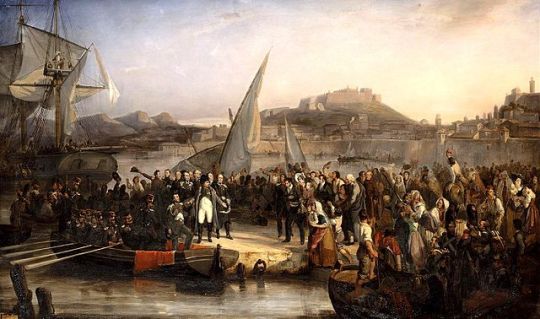
26 February 1815: In one of those life-is-stranger-than-fiction episodes, Napoleon escaped from Elba to return to France and reclaim his crown.
Napoleon’s flotilla consisted of the Inconstant, which normally carried 18 guns and now had 26; the French merchant brig Saint Esprit, hired for the occasion; the bombard Étoile, with 6 guns; the felucca Caroline, and three smaller vessels. On these boats were some 1,150 people: 600 Old Guard; 100 Polish Lancers; 300 members of the Corsican Battalion; 50 gendarmes; and 100 civilians, including servants.
For details on how he managed to get this force past the British and French, who were supposed to contain him, see “How did Napoleon escape from Elba?”
Image: Napoleon leaving Elba by Joseph Beaume, 1836
31 notes
·
View notes